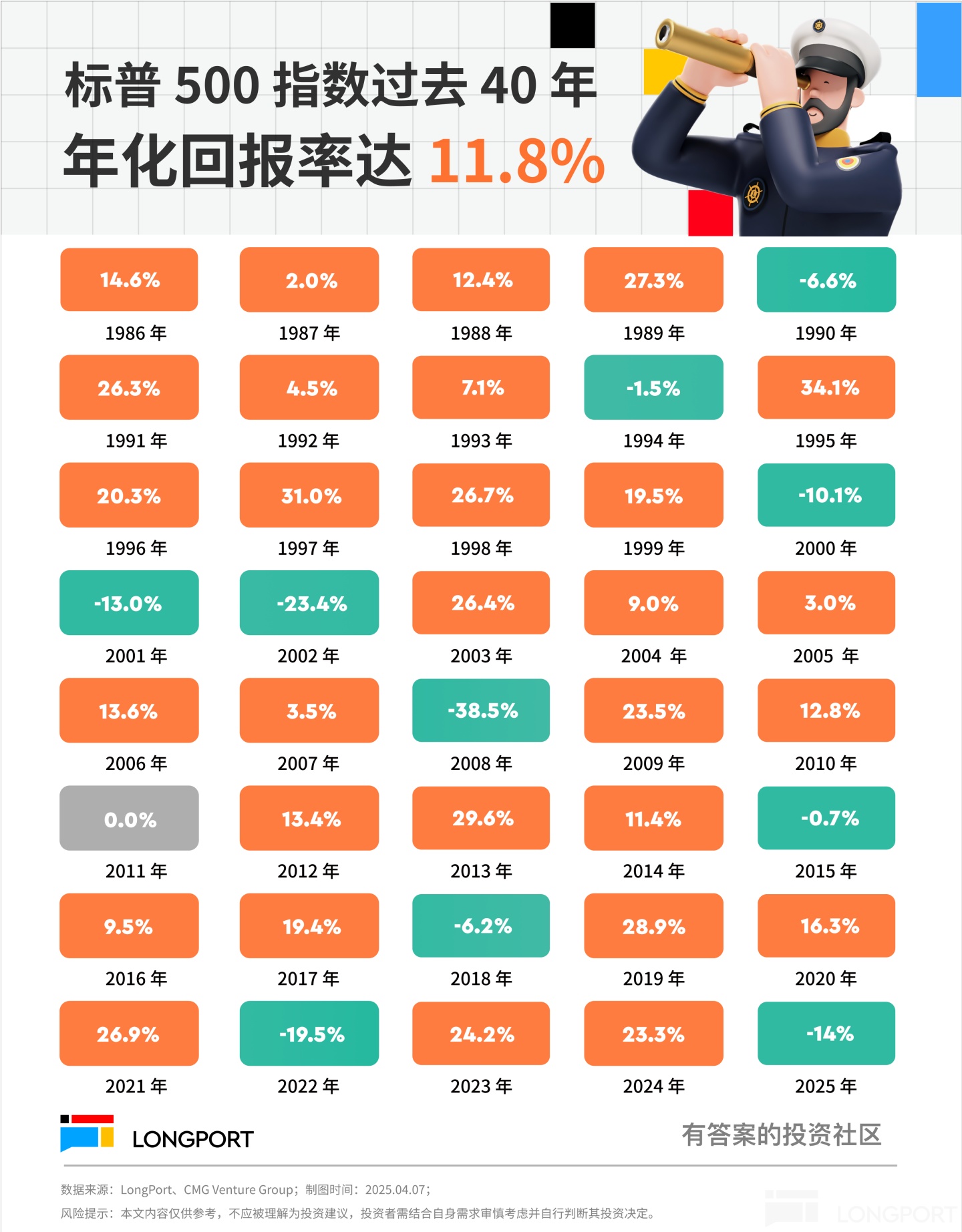
US stocks experienced an epic sell-off, what are the coping methods?

U.S. Stocks Experience Epic Sell-off
Last week, due to Trump's "reciprocal tariffs" policy, global markets experienced the most intense sell-off since the 2020 pandemic:
- The S&P 500 fell 10% in two days, marking the fourth such occurrence since 1952 (previous instances: October 1987, November 2008, March 2020);
- Last week, the Dow Jones fell 8%, the S&P 500 fell 9%, and the NASDAQ fell 10%, wiping out $5 trillion in U.S. stock market value;
- The CBOE Volatility Index (VIX) surged 110% to 45 last week, nearing peaks seen during the March 2020 circuit breakers and the August 2024 yen carry trade-triggered global plunge;
- CNN's Fear & Greed Index plummeted to a rare 4, indicating extreme market panic;
Lessons from Past U.S. Bear Markets
China International Capital Corporation (CICC) summarized four main triggers for U.S. bear markets: Federal Reserve tightening, deteriorating fundamentals, high valuations, and external shocks.
Hotspot News compiled data on the declines, durations, triggers, and recovery times for U.S. bear markets (represented by the S&P 500) since 1998. Historical data suggests U.S. stocks always recover from bear markets:
Current Valuation Levels
According to Goldman Sachs, the S&P 500's forward P/E ratio stands at 20x, still in the 77th percentile of the past 30 years' valuation data, indicating high valuations. The P/E ratio at market bottoms was 14x in 2018, 13x in 2020, and 15x in 2022.
How to Respond?
Investors may have differing views on the market outlook. Some may believe U.S. stocks remain overvalued and support shorting, while others may seek to buy the dip. How can various trading tools cater to these strategies?
For Shorting and Hedging
Goldman Sachs data shows hedge funds' net selling of global stocks hit a record high since 2010 last week, driven by short selling. U.S. macro products (indices + ETFs) faced the largest nominal short selling on record, with hedge funds aggressively increasing hedges during the downturn.
Applicable tools:
- Directly short U.S. stocks—refer to this guide: Longbridge U.S. Short Selling (Securities Lending) Guide;
- Buy inverse ETFs for stocks or indices, e.g.: $Direxion Semicon Bear 3X(SOXS.US), $Proshares UltraPro Short QQQ ETF(SQQQ.US), $Pro UltrPro Shrt S&Pro 500(SPXU.US), $Pro UltrPro Shrt Dow30(SDOW.US);
- Buy volatility ETFs, e.g.: $Pro Vix Shrt Fut(VIXY.US), $2x Long VIX Futures ETF(UVIX.US);
- Buy put options or sell call options to hedge long positions;
*For the most comprehensive leveraged/inverse ETF hedging tools, visit: Hedging Tools
For Bottom-Fishing and Rebounds
CMG Venture Group notes the S&P 500's annualized return over the past 40 years was 11.8%. Investors who buy or dollar-cost average near long-term bottoms may achieve higher returns.

Applicable tools:
- Set grid strategies for bottom-fishing. Investors with limited capital can use fractional shares: Start with $1—Fractional Shares Make U.S. Investing Easy;
- Bet on quick rebounds:
- Buy leveraged long ETFs for stocks or indices, e.g.: $Direxion Semicon Bull 3X(SOXL.US), $Proshares UltraPro QQQ(TQQQ.US), $Direxion Daily TSLA Bull 2X Shares(TSLL.US), $GraniteShares 2x Long NVDA Daily ETF(NVDL.US), $Direxion FTSE China Bull 3X(YINN.US);
- If the VIX nears historical highs, short volatility via $-1x Short VIX Futures ETF(SVIX.US);
- Buy call options: Options 101, Options Strategies;
Navigating High Volatility
Goldman Sachs expects the S&P 500 to form wide gap-down/up swings in coming weeks. To capitalize on potential sharp moves, advanced traders can use straddle options: Long Straddle (Anticipating High Volatility).
How will you respond to this U.S. market plunge? Can U.S. stocks stage a comeback tonight? Join the guessing game on Tesla, NVIDIA, and Apple's performance: Daily Market Guess—Win Rewards
The copyright of this article belongs to the original author/organization.
The views expressed herein are solely those of the author and do not reflect the stance of the platform. The content is intended for investment reference purposes only and shall not be considered as investment advice. Please contact us if you have any questions or suggestions regarding the content services provided by the platform.



